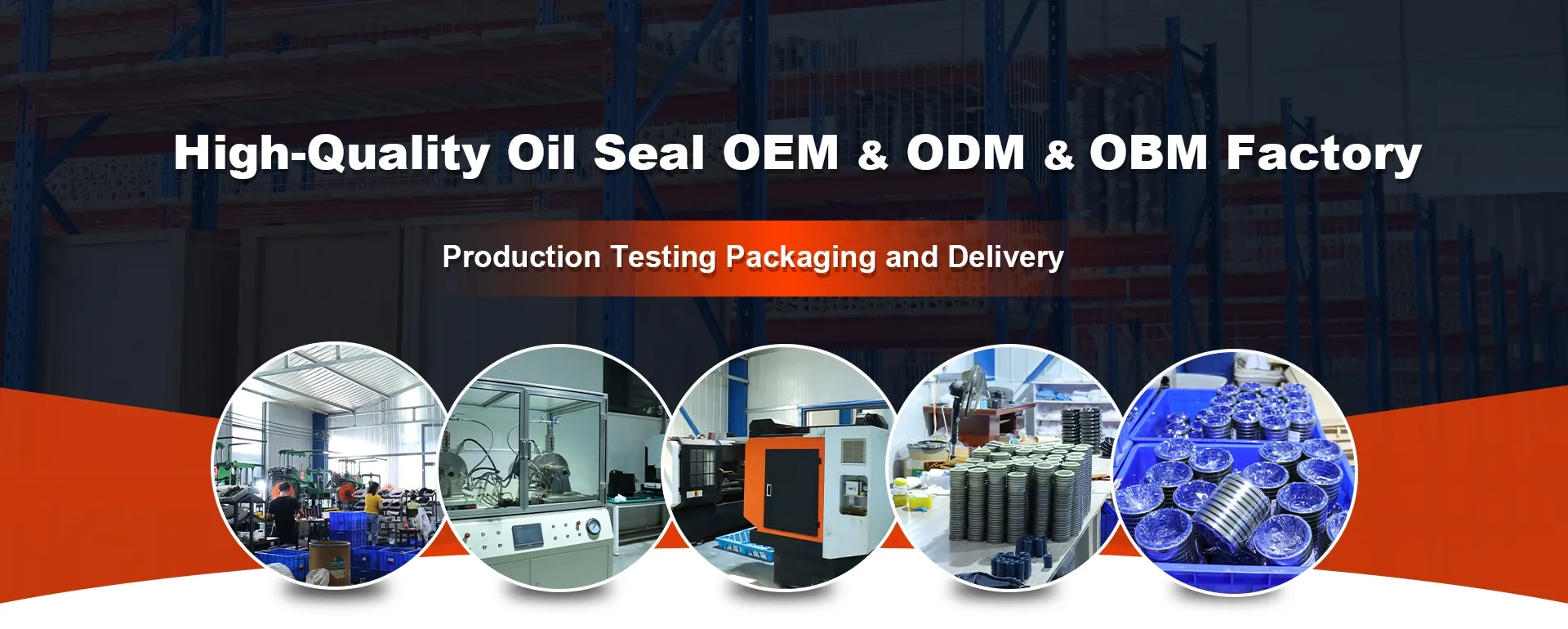Th12 . 25, 2024 14:58 Back to list
Hydraulic Oil Seals for Enhanced Performance and Durability in Fluid Systems
Understanding Hydraulic Oil Seals Essential Components in Hydraulic Systems
Hydraulic systems are crucial in a variety of industries, providing the power and efficiency needed for numerous applications, from heavy machinery to automotive systems. One of the key components that ensure the effective operation of these systems is the hydraulic oil seal. This article explores the importance, types, materials, and applications of hydraulic oil seals, highlighting their role in the overall functionality of hydraulic systems.
What is a Hydraulic Oil Seal?
A hydraulic oil seal, also known as a hydraulic seal or fluid seal, is a device designed to prevent the leakage of hydraulic fluids while maintaining pressure within hydraulic systems. These seals are crucial for preventing the loss of fluid and ensuring the system operates efficiently. A well-functioning hydraulic oil seal effectively separates different components within a hydraulic system, preventing contamination from external elements and maintaining the integrity of the hydraulic fluid.
Importance of Hydraulic Oil Seals
The significance of hydraulic oil seals cannot be overstated. These seals perform several critical functions, including
1. Leakage Prevention Hydraulic systems operate under high pressure, and any leak can lead to significant performance issues. Oil seals prevent hydraulic fluids from leaking out of the system, ensuring that it functions efficiently.
2. Pollution Control By sealing off the hydraulic fluid, oil seals prevent dirt, dust, and other contaminants from entering the system. Contaminated fluid can cause wear and damage to components, reducing the lifespan of the hydraulic system.
3. Pressure Maintenance Hydraulic oil seals are designed to withstand high pressure, ensuring that the hydraulic fluid remains contained within the system. This is vital for the proper functioning of hydraulic machinery, as fluctuations in pressure can lead to operational failures.
4. Cost Efficiency Preventing leaks and contamination helps lower maintenance costs and extends the life of hydraulic components. Investing in high-quality hydraulic oil seals can lead to long-term savings by reducing the frequency of repairs and replacements.
Types of Hydraulic Oil Seals
Hydraulic oil seals come in various types, each suited for specific applications. Some common types include
1. Static Seals These seals are used in applications where there is no relative motion between the sealing surfaces. They are commonly found in flanges, pumps, and compressors.
2. Dynamic Seals Designed for applications with relative motion, dynamic seals are used in hydraulic cylinders, shafts, and other moving parts. They are often made with advanced materials to withstand wear and friction.
hydraulic oil seal

3. Rotary Seals These seals are specifically designed for rotating shafts. They are commonly used in motors and gearboxes, providing a reliable barrier against fluid leakage.
4. V-Rings and U-Cups These are specialized seals that offer excellent sealing performance in various hydraulic applications. They are often employed in hydraulic cylinders and other moving components.
Materials Used in Hydraulic Oil Seals
The material used for hydraulic oil seals is critical to their performance. Common materials include
1. Nitrile Rubber (NBR) This is one of the most widely used materials due to its resistance to oil and a wide range of temperatures. NBR seals are suitable for most standard hydraulic oils.
2. Fluoroelastomer (FKM) Known for its exceptional chemical resistance, FKM is ideal for high-temperature applications and aggressive fluids.
3. Polyurethane (PU) This material offers excellent wear resistance and is often used in dynamic applications where durability is essential.
4. PTFE (Polytetrafluoroethylene) Renowned for its low friction properties, PTFE is used in applications requiring minimal resistance and high performance.
Applications of Hydraulic Oil Seals
Hydraulic oil seals are found in a vast array of applications across various industries, including
- Manufacturing Used in hydraulic presses and machinery. - Aerospace Essential in aircraft hydraulic systems for precise control. - Automotive Found in power steering systems, brakes, and transmission units. - Construction Used in excavators, loaders, and other heavy equipment.
Conclusion
Hydraulic oil seals are integral to the functionality of hydraulic systems. Their ability to prevent leaks, control contamination, and maintain pressure makes them essential for the efficiency and longevity of hydraulic machinery. By understanding the various types and materials of hydraulic oil seals, industries can significantly enhance their operational effectiveness, reduce downtime, and extend the lifespan of their hydraulic systems. Investing in high-quality seals is not just a matter of performance; it’s a strategic decision for long-term productivity.
-
The Trans-formative Journey of Wheel Hub Oil Seals
NewsJun.06,2025
-
Graphene-Enhanced Oil Seals: Revolutionizing High-Pressure Oil Sealing
NewsJun.06,2025
-
Future of Hydraulic Sealing: Advanced Intelligent TCN Oil Seals
NewsJun.06,2025
-
Don’t Let a Broken TCV Oil Seal Ruin Your Day
NewsJun.06,2025
-
Bio-Inspired Dust Seals for Better Sealing Performance
NewsJun.06,2025
-
Biodegradable and Sustainable Hydraulic Seal Materials
NewsJun.06,2025
-
Top Oil Seal Solutions for Your Industrial Needs
NewsMay.22,2025
Products categories
















